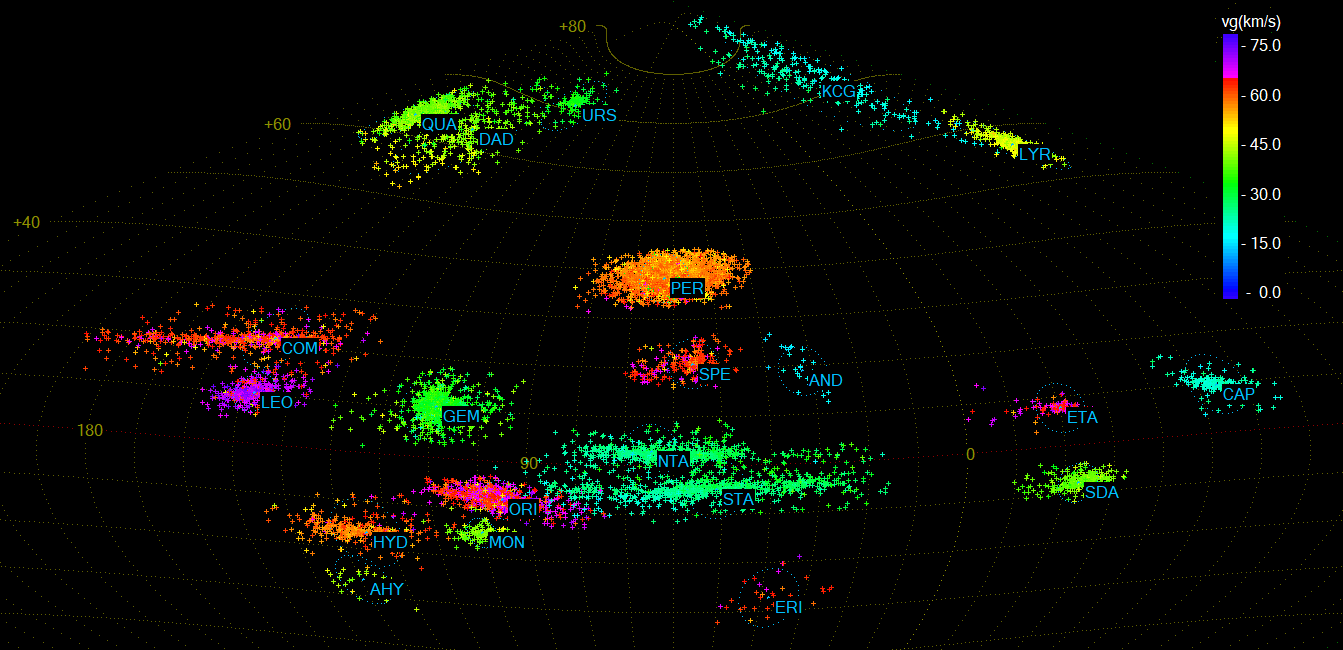NEMETODE detects 500,000th meteor
2022 April 6
NEMETODE (NEtwork for MEteor Triangulation and Orbit Determination) was founded in 2012 by William Stewart (Ravensmoor, Cheshire) and Alex Pratt (Leeds, West Yorkshire).1 We had recorded meteors independently for some years, before a post on a meteor forum resulted in a collaboration that led to the creation of NEMETODE. It is a network of video cameras, primarily in the United Kingdom and Ireland, that monitors meteor activity throughout the year and uses multi-station triangulation to determine meteor magnitudes, radiants, trajectories, velocities and solar-system orbits.
From the outset, NEMETODE’s primary goals have been to encourage collaboration amongst its observers, share best practice in equipment and techniques, and publish the analysis of the gathered data in peer-reviewed journals. Dozens of detection systems have been built, tested and supplied, while multiple workshops have been held to train in the use of UFO Capture, Analyser and Orbit software. Significant growth in the membership of the network over the past 10 years has improved our coverage and as of 2022 February, these stations have recorded ~500,000 meteors, enabling analyses of characteristics of the major (and selected minor) meteor showers.

These analyses are submitted to the BAA Meteor Section and are used to revise the Meteor Diary in the BAA Handbook. They are also summarised in a series of articles and papers in the BAA Journal and occasionally WGN (the journal of the International Meteor Organization), copies of which are all available on the NEMETODE website.1 The team also uses diffraction gratings to obtain meteor spectra and we collaborate with Bill Ward to identify the parent meteors of his high-quality spectra. In addition, we also operate radio detection systems.
We have considered a number of alternative meteor detection solutions. Since 2020, we have built and operated some Raspberry Pi Meteor Station (RMS) cameras, which contribute data to the Global Meteor Network. These ‘next generation’ systems are lower cost (to purchase and operate), are more sensitive than most analogue cameras and automate the analysis and uploading of the captured data. In addition, the RMS software is regularly updated to incorporate user suggestions and address the (now very few) performance issues it once had. Some of our RMS stations are run in parallel with a UFO Capture camera, monitoring the same field, so we can evaluate the results from both systems.
These RMS stations have added a further ~90,000 meteors to our data set. RMS can generate multiple records for bright meteors and extra records if a meteor transcends two consecutive video clips. We find that the system works very well from dark locations, but less so under light-polluted suburban skies; the illuminated clouds can create large numbers of false detections and data vetting is hence required. All meteor detection systems have their pros and cons.
Video capture and analysis of meteors is now much less of a technical challenge than it was only 10 years ago; it has moved from niche to mainstream. NEMETODE too is evolving and the team is currently reviewing opportunities for the next decade.
https://britastro.org/wp-content/uploads/1970/01/NEMETODE_2012-2022_RMAP.bmp
| The British Astronomical Association supports amateur astronomers around the UK and the rest of the world. Find out more about the BAA or join us. |
